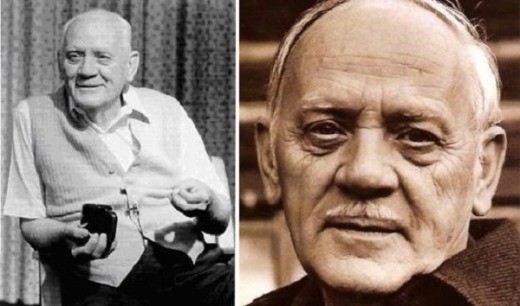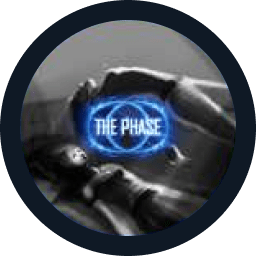Lucid dreaming — a phenomenon in which an individual is aware they are dreaming while remaining asleep and can control the events within the dream — has fascinated researchers and enthusiasts in recent years. While scientists associate lucid dreaming with heightened activity in the brain’s frontal lobes (the region responsible for self-awareness), for many, it remains a mysterious experience that borders on the scientific and the deeply personal. Numerous books have been written on lucid dreaming, detailing techniques, offering advice, and explaining the phenomenon. Among these, five stand out as the best lucid dreaming books, which provide the most valuable insights and offer readers the most help in unlocking new aspects of their subconscious.

Stephen LaBerge: Lucid Dreaming
Stephen LaBerge’s Lucid Dreaming, published in 1985, is a seminal work in the field, reflecting the author’s extensive research aimed at proving the existence of lucid dreams. His work stands out because it not only explores lucid dreaming from a scientific perspective but also offers practical advice on how individuals can develop their ability to control dreams. LaBerge’s book is packed with scientific data and offers detailed instructions on how to experience and manage lucid dreams.
In his book, LaBerge introduces techniques such as the mnemonic induction of lucid dreams (MILD), which is based on the intent to remember one’s dreams. He emphasizes the importance of keeping a dream journal to enhance dream awareness. Each chapter reveals the essence of lucid dreaming, guides readers through its history (with references going as far back as 400 BC), and encourages them to reflect on the possibilities that arise when one masters the art of dream control. LaBerge’s work is regarded as one of the best lucid dreaming books, especially for those interested in a methodical and scientific approach to dream exploration.
Carlos Castaneda: The Art of Dreaming
Carlos Castaneda’s The Art of Dreaming offers a vastly different approach to lucid dreaming. Castaneda, a well-known figure for his explorations of shamanism and mystical practices, recounts his experiences with the Yaqui shaman Don Juan Matus, who taught him the art of “dreaming” as a way of traveling to alternative realities. Unlike LaBerge’s scientific approach, Castaneda’s work is deeply rooted in mythology and mysticism, yet it remains one of the most recognized books about lucid dreaming.
In The Art of Dreaming, Castaneda introduces the concept of “dream gates,” which represent key stages in mastering dream control. The first gate, for instance, involves the ability to recognize oneself in a dream (often by becoming aware of one’s own hands). Subsequent gates involve moving between dreams, altering dream scenarios, and interacting with entities that Castaneda claims inhabit other worlds. His mystical perspective on lucid dreaming offers readers a spiritual journey that contrasts with more scientific perspectives. Nevertheless, Castaneda’s teachings remain valuable for those seeking a deeper, metaphysical understanding of lucid dreams.
 Robert Monroe: Journeys Out of the Body
Robert Monroe: Journeys Out of the Body
Robert Monroe’s Journeys Out of the Body explores the concept of out-of-body experiences, a phenomenon related to lucid dreaming, by which individuals feel they can leave their physical bodies and observe themselves from an external perspective. Monroe, who started his career in radio, became fascinated by the impact of sound waves on the human mind, particularly during sleep. Through his experiments, he claimed to have had out-of-body experiences, which he detailed in this groundbreaking book.
Journeys Out of the Body is a blend of personal experience and experimental data, making it a unique entry in the canon of lucid dreaming books. Monroe’s work delves into the techniques he developed to induce these experiences and provides a step-by-step guide for readers interested in exploring the boundaries of consciousness. His work has attracted not only the general public but also the scientific community, making it a crucial read for anyone looking to expand their understanding of the human mind’s potential during sleep.
Stepan Yusin: Lucid Dreaming: Where the Astral Lies
Stepan Yusin’s Lucid Dreaming: Where the Astral Lies is a comprehensive guide for anyone interested in the theory and practice of lucid dreaming. This book is particularly valuable in that it offers a complete framework for mastering lucid dreaming through a balanced combination of theoretical exploration and practical advice. Yusin discusses the phenomenon in depth, covering topics such as creativity and personal development, and he presents practical methods for achieving dream control.
One of the standout features of Yusin’s work is his emphasis on the importance of keeping a dream journal. By recording dreams, readers can better understand recurring themes and emotions, ultimately gaining more control over their dream experiences. His book is especially suitable for beginners and dream enthusiasts who wish to explore the boundaries of their consciousness and unlock new possibilities in their dream worlds.

Michael Raduga: The Phase
Michael Raduga’s The Phase takes a scientific yet philosophical approach to lucid dreaming, making it one of the more nuanced books about lucid dreaming available today. Raduga focuses on the practical benefits of lucid dreams, emphasizing how they can help individuals acquire new skills, solve problems, and gain insights into their emotions—all while they sleep.
Raduga’s book provides readers with detailed techniques for inducing lucid dreams, including methods for gaining information, solving personal dilemmas, and enhancing creativity. He argues that lucid dreaming can be a tool for self-improvement, allowing individuals to practice skills, such as playing an instrument or painting, or address psychological or emotional challenges. His central message is clear: with enough practice and dedication, anyone can access lucid dreams. Raduga’s work serves as a motivational guide, encouraging readers to unlock the full potential of their subconscious through dream control.
In conclusion, the world of lucid dreaming offers a wide array of experiences and possibilities, and each of the top five best lucid dreaming books listed above provides unique perspectives on how to explore and master this fascinating phenomenon. Whether you’re looking for a scientific guide or a mystical journey, these books offer invaluable resources for anyone interested in the art of lucid dreaming.
Lucid Dreaming and Out-of-Body Experience Books
FAQ
Recommended reading
Out of body experience is one of the phase states


 Robert Monroe: Journeys Out of the Body
Robert Monroe: Journeys Out of the Body





